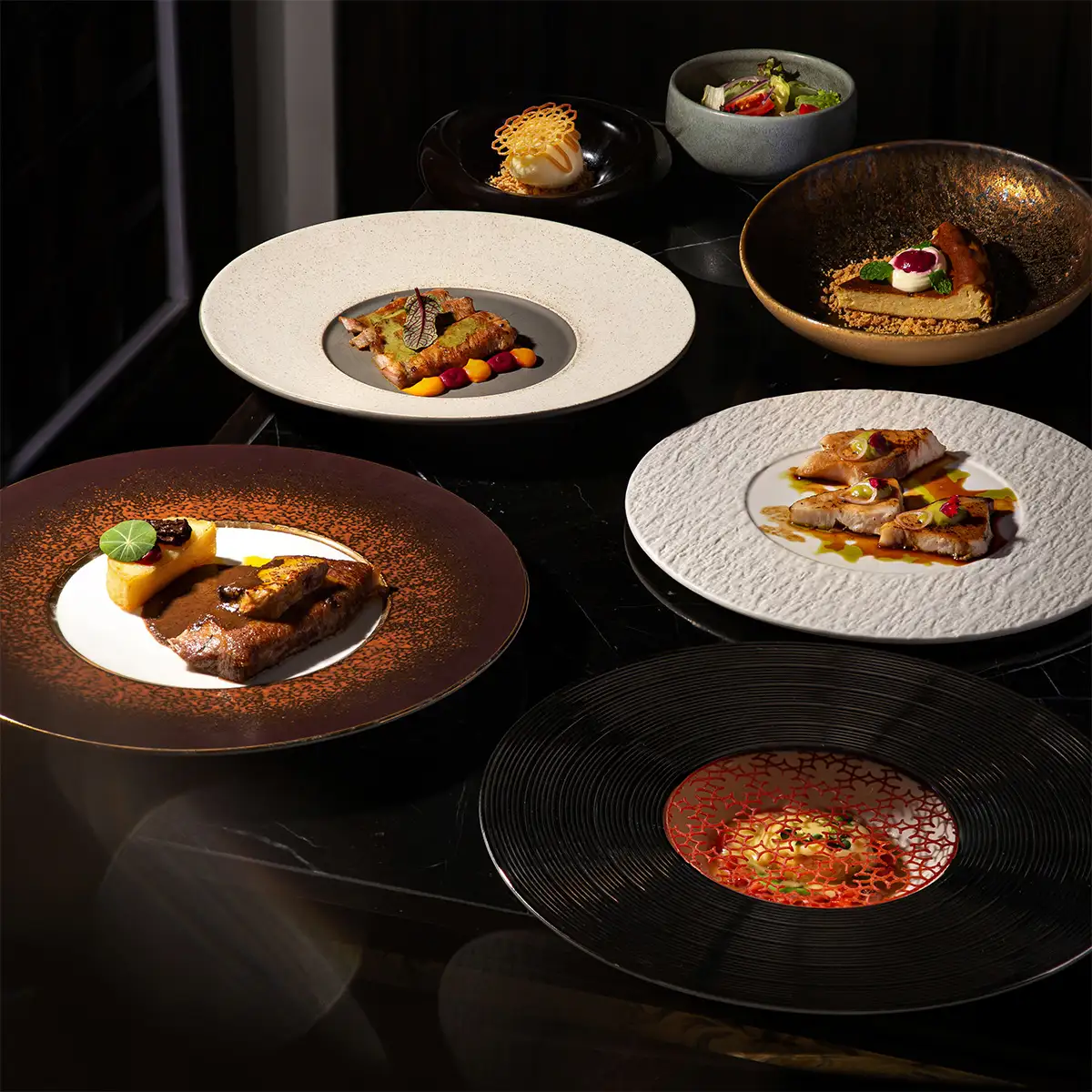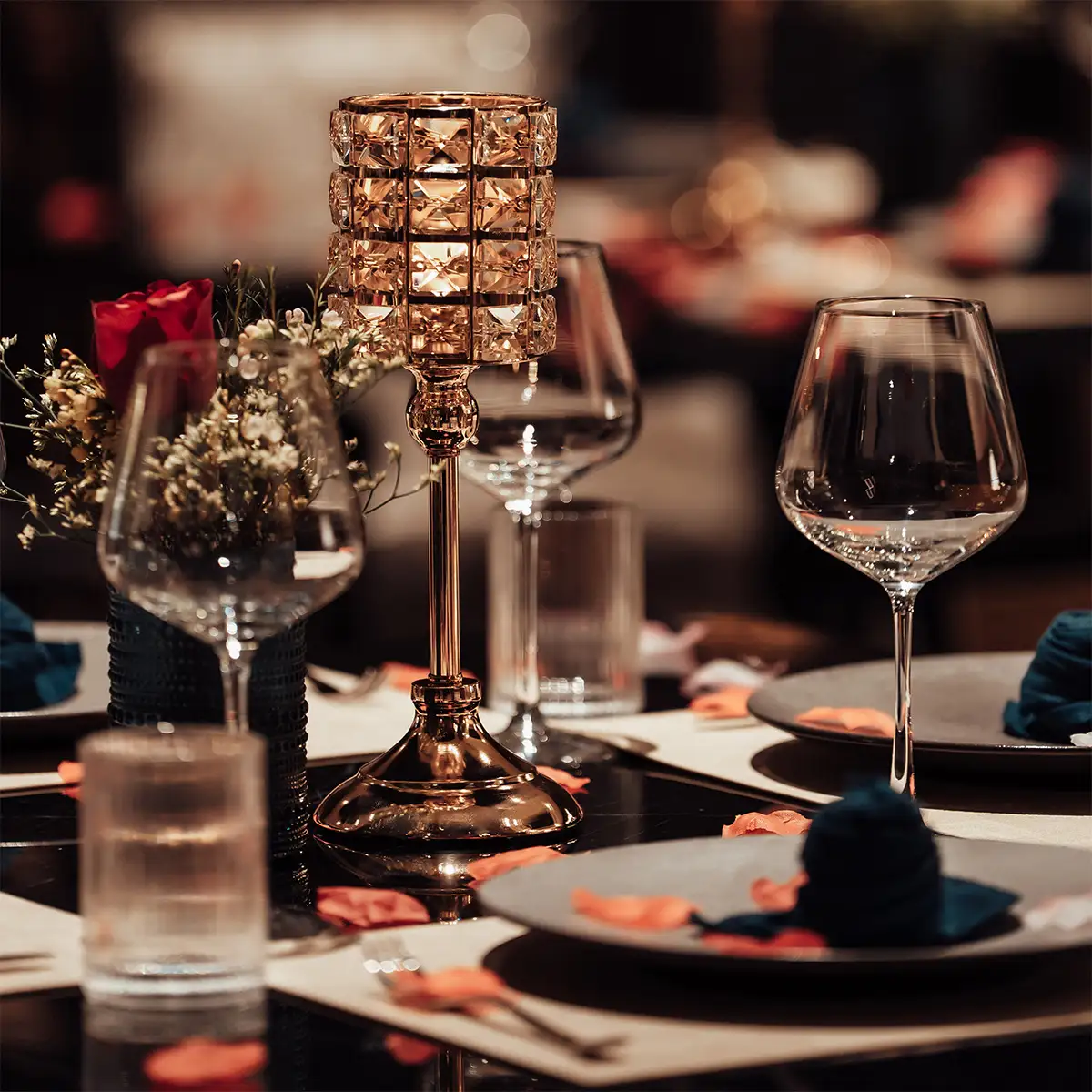The term fine dining evokes images of exquisite cuisine, impeccable service, and an ambiance of refined elegance. It represents the pinnacle of culinary artistry and has played a significant role in shaping gastronomic culture worldwide. However, to truly appreciate its current standing, one must delve into the rich fine dining history, a narrative of evolution, innovation, and an unyielding pursuit of excellence. This exploration seeks to unravel the multifaceted history of fine dining, tracing its origins and development. Moca Dining, a contemporary establishment dedicated to these enduring principles, serves as a modern exemplar of this storied tradition.
1. Defining fine dining
At its core, fine dining is an elevated culinary experience characterized by meticulous attention to detail across every facet. It transcends mere sustenance, offering a symphony of sophisticated flavors, artistic presentation, and unparalleled service within an elegant setting. The essential elements that constitute a fine dining experience include the procurement of premium, often rare, ingredients; the application of complex and precise culinary techniques; an aesthetically driven presentation of dishes; highly professional and anticipatory service; and an ambiance designed for comfort and luxury.
This luxury dining experience starkly contrasts with other culinary categories. Casual dining, while enjoyable, offers a more relaxed atmosphere and simpler fare. Fast food, by its very nature, prioritizes speed and convenience over a comprehensive sensory experience. Fine dining, or haute cuisine as it is often termed, distinguishes itself through its commitment to creating a memorable and often theatrical event for the guest. A quintessential example of a world-renowned fine dining establishment is The French Laundry in Yountville, California, helmed by Chef Thomas Keller, celebrated for its innovative American cuisine and exacting standards. Another historic example, though now closed, was El Bulli in Spain, which pushed the boundaries of molecular gastronomy and redefined the gourmet cuisine evolution.
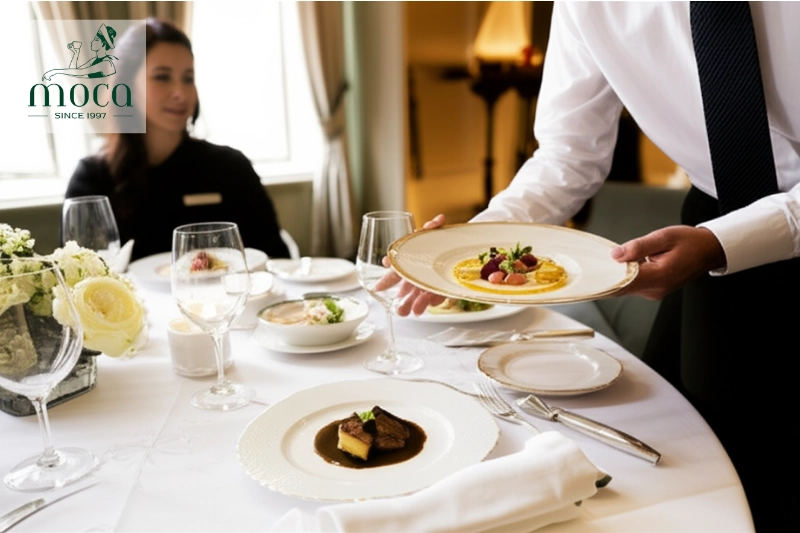
Fine dining: where culinary artistry meets impeccable service and ambiance.
2. The history of fine dining’s formation and development
The gastronomic history of fine dining is a fascinating chronicle of societal and culinary shifts. Its roots can be traced back to the opulent banquets of European aristocracy, where lavish meals were a display of wealth and power. However, the concept of a public restaurant offering such an experience is a more recent development in the evolution of restaurant culture.
The main stages of development in the history of fine dining can be broadly categorized:
- Early stage: The Formation of Luxury Restaurants. The late 18th century saw the emergence of the first luxury restaurants in Paris. Establishments like La Grande Taverne de Londres, founded in 1782, began offering à la carte menus and private tables, a departure from the communal, fixed-menu offerings of inns. This marked a pivotal moment in the evolution of restaurants.
- Development stage: The Influence of Famous Chefs and Culinary Movements. The 19th and early 20th centuries were transformative, largely due to the contributions of pioneering chefs. Marie-Antoine Carême, often dubbed the "King of Chefs and Chef of Kings," codified French cuisine, emphasizing elaborate presentations and rich sauces. Later, Auguste Escoffier revolutionized kitchen management with the brigade system and simplified Carême's elaborate style, laying the groundwork for modern haute cuisine. His book, "Le Guide Culinaire," remains a cornerstone of classical cooking. Fernand Point, a mentor to many subsequent culinary legends, championed fresh, regional ingredients and lighter preparations, foreshadowing future trends. The mid-20th century saw the rise of Nouvelle Cuisine, a movement that further emphasized freshness, lightness, and artistic plating, significantly impacting the development of culinary arts.
- Modern stage: The Diversification and Globalization of Fine Dining. Contemporary fine dining is characterized by immense diversity. While French cuisine remains influential, culinary traditions from around the globe are now celebrated at the highest level. There's a greater emphasis on chef-driven concepts, sustainability, and the integration of technology. The culinary evolution continues with chefs exploring new techniques and flavor combinations, pushing the boundaries of modern gastronomy.
Chefs like Auguste Escoffier and Fernand Point are undisputed titans in the history of fine dining, their philosophies and innovations shaping the very definition of gourmet cuisine. While direct scientific evidence of changes in taste perception through the ages is complex and multifaceted, historical records, cookbooks, and art depict evolving preferences. For instance, the heavy spicing of medieval cuisine, partly for preservation, gave way to an emphasis on the natural flavors of ingredients during the Renaissance and beyond, a trend that continues in modern fine dining.

The evolution of fine dining: from royal banquets to global innovation.
Learn more: Unveiling Fine Dining History: From Origins to the Moca Dining Experience
3. Key characteristics of fine dining
The enduring appeal and distinctiveness of fine dining are rooted in several key characteristics that are meticulously upheld:
- Ingredients: The foundation of any exceptional fine dining dish is the quality of its components. There is an unwavering commitment to sourcing the freshest, highest-quality ingredients, often seasonal and locally sourced. The use of rare and specialty items, such as Alba truffles, premium caviar, or specific varieties of seafood, further elevates the epicurean journey. For example, a dish featuring freshly foraged morels in spring or line-caught sea bass exemplifies this dedication to superior produce.
- Cooking techniques: The development of culinary arts within fine dining showcases a mastery of both traditional and modern culinary techniques. Meticulousness and sophistication are paramount in every step of preparation, from a perfectly executed consommé that requires hours of gentle simmering to the precise application of molecular gastronomy techniques like spherification or foams. Complex methods such as sous-vide cooking, ensuring perfect and even temperature control, are common in fine dining kitchens.
- Dish presentation: In fine dining, the visual aspect of a dish is considered as important as its taste. Aesthetics and artistry in arrangement transform a plate into a canvas. The thoughtful combination of colors, shapes, textures, and negative space creates a visually stunning experience that whets the appetite. Examples include intricately layered terrines, deconstructed classics, or desserts that resemble miniature sculptures. This focus on artistic plating is a hallmark of luxury dining.
- Service: The service in a fine dining restaurant is an art form in itself. Professionalism, attentiveness, and discretion are expected from all staff members, from the maître d’hôtel who orchestrates the dining room to the sommelier who expertly guides wine selections. Staff possess extensive knowledge of the menu, ingredients, wine pairings, and even the gastronomic history of certain dishes. Attentive service might include crumbing the table between courses, refilling water glasses unobtrusively, and anticipating a guest's needs before they are voiced.
- Ambiance: The physical environment of a fine dining establishment is carefully curated to create a luxurious, sophisticated, and comfortable atmosphere. This includes elegant interior design, high-quality furnishings, appropriate lighting that sets a mood, and often, subtle background music that enhances the dining experience without intruding. Restaurants with unique spaces, perhaps offering panoramic city views or housed in historically significant buildings, further contribute to the overall fine dining experience.
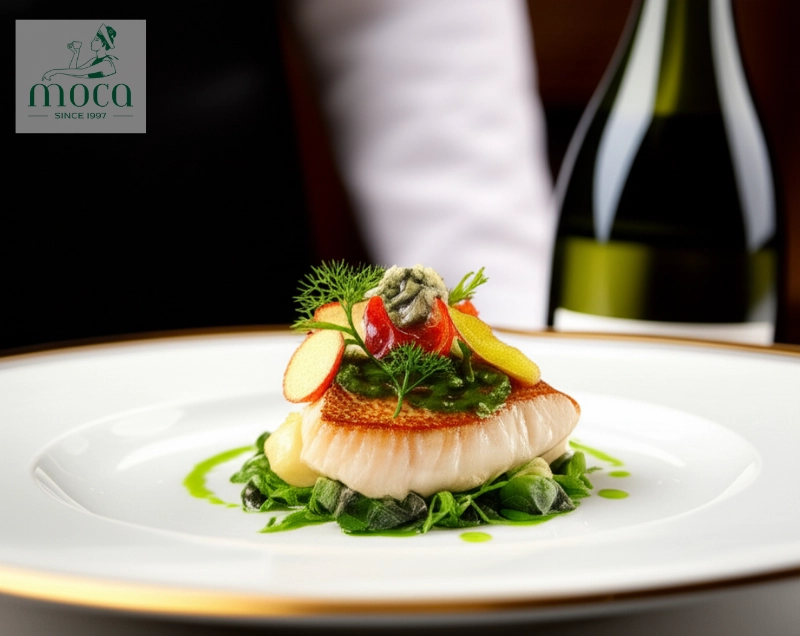
Fine dining excellence: premium ingredients, artistic presentation, impeccable service, and luxurious ambiance.
4. Modern fine dining trends
The landscape of modern fine dining is dynamic, continuously shaped by innovation and evolving consumer preferences, all while respecting its rich gastronomic heritage. Several key trends define the current era:
- The combination of tradition and modernity: Many leading chefs are skillfully blending time-honored culinary traditions with contemporary techniques and global influences. This results in dishes that are both familiar and surprisingly new, offering a fresh perspective on classic gourmet cuisine.
- Using local, seasonal ingredients: The farm-to-table movement has become a cornerstone of modern fine dining. There is a profound emphasis on sourcing ingredients from local purveyors and highlighting seasonal produce at its peak freshness. This not only supports local economies but also ensures superior flavor and quality.
- Focus on sustainability and environmental protection: A growing number of fine dining restaurants are embracing sustainable practices. This includes minimizing food waste, sourcing seafood responsibly, reducing carbon footprints, and supporting ethical farming. Sustainable fine dining is becoming an increasingly important consideration for both chefs and discerning diners.
- Applying technology to the dining experience: Technology is being integrated in various ways, from sophisticated online reservation systems and kitchen management software to innovative culinary techniques and even interactive elements for guests. However, the core focus remains on enhancing, not overshadowing, the human element of hospitality.
Restaurants like Noma in Copenhagen (renowned for its focus on foraging and Nordic cuisine) or Osteria Francescana in Modena (known for its avant-garde approach to Italian classics) are often cited as pioneers in these new trends, constantly pushing the boundaries of culinary innovation and influencing the history of fine dining in real-time.
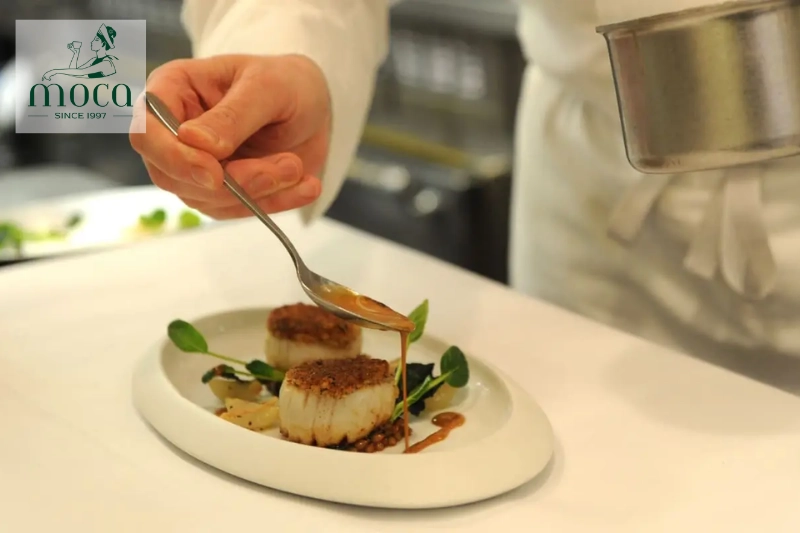
Modern fine dining: where innovation, sustainability, and tradition unite on the plate.
Learn more: Fine Dining: Discover the Art of Elevated Cuisine
5. The fine dining experience at Moca Dining
At Moca Dining, we are deeply inspired by the illustrious fine dining history and are committed to contributing to its ongoing culinary evolution.
Located in a sophisticated urban setting, Moca Dining offers an ambiance of understated elegance. Our design style blends contemporary aesthetics with classic comfort, creating a welcoming yet refined atmosphere. Our culinary team, led by chefs with extensive experience in globally acclaimed kitchens, is the heart of our establishment. Moca Dining's culinary philosophy is rooted in a profound respect for ingredients, a passion for innovative culinary techniques, and a desire to create unforgettable fine dining experiences for our esteemed guests.
Moca Dining distinguishes itself through a unique, creative menu that celebrates both global influences and the finest seasonal produce. We pride ourselves on using high-quality ingredients with impeccable, traceable origins, ensuring both exceptional flavor and ethical sourcing. Our service is professional, dedicated, and intuitive, aiming to anticipate your every need. The cozy yet luxurious space is designed to make every occasion special. We believe these elements, combined, offer a distinct interpretation of modern fine dining.
One of our standout creations is the Moca Phở Wagyu Puffed Pastry, a seasonal signature crafted by our head chef with meticulous care. This innovative dish reimagines the beloved Vietnamese phở, encasing tender slices of premium Wagyu beef and aromatic broth reduction within a delicate, golden puffed pastry. Each element is thoughtfully prepared—the rich, umami-laden broth is slowly simmered from marrow bones and traditional spices, then gently reduced to concentrate its deep, complex flavors. The crisp pastry shell offers a textural contrast, capturing the essence of comfort with an elegant twist. Garnished with fresh herbs, pickled shallots, and a hint of lime zest, the dish delivers a balance of warmth, sophistication, and seasonal refinement. Like all our offerings, it represents our unwavering commitment to quality, creativity, and the artistry of fine dining.
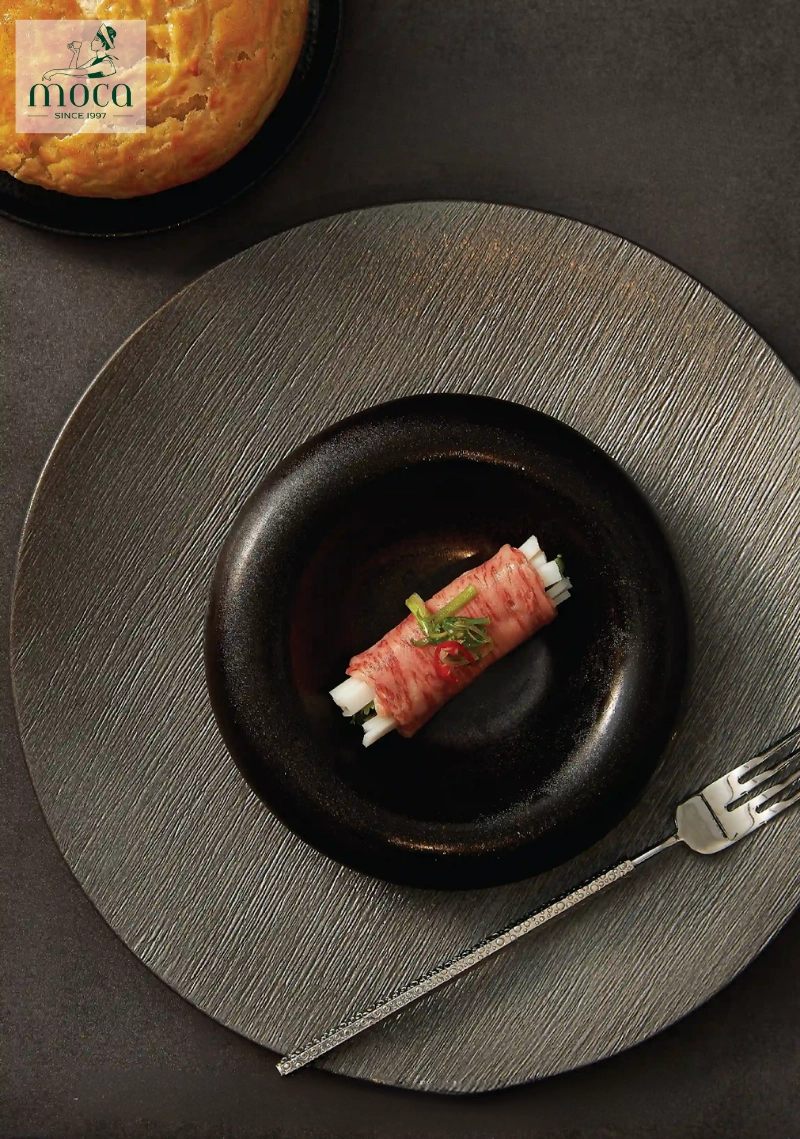
Moca Dining’s signature: the Moca Phở Wagyu Puffed Pastry—where tradition meets innovation in every bite
Moca Dining proudly embraces the rich fine dining history, blending timeless tradition with modern culinary artistry. From its elegant origins to today’s diverse expressions, fine dining has always transformed meals into memorable experiences. At Moca Dining, we honor this legacy with passion, precision, and creativity, offering guests a refined journey that celebrates both heritage and innovation. Join us to experience the essence of luxury dining shaped by generations of gastronomic excellence.








